
Overview
The average conversion rates for direct-to-consumer (DTC) eCommerce brands are a critical metric, typically ranging from 2% to 3%. These rates are influenced by various factors, including industry specifics and marketing strategies. Understanding these nuances is essential for brands aiming to enhance their performance in a competitive landscape.
To improve these conversion rates and drive overall sales performance, continuous optimization is paramount. Effective methods include:
- User session recordings
- Competitor analysis
- A/B testing
These strategies not only refine the customer experience but also empower brands to make data-driven decisions that foster growth.
In conclusion, DTC eCommerce brands must recognize the importance of these insights and actively implement optimization techniques. By doing so, they can significantly enhance their conversion rates and secure a stronger foothold in the market.
Introduction
The realm of eCommerce stands as a dynamic arena where conversion rates emerge as a pivotal indicator of success for direct-to-consumer (DTC) brands. With average conversion rates typically ranging from 2-3%, grasping the intricacies that sway these metrics can unveil substantial growth opportunities. This article explores expert strategies and industry benchmarks designed to assist brands in navigating the complexities of conversion optimization. Yet, amidst the multitude of variables at play, how can businesses effectively elevate their conversion rates and distinguish themselves in an increasingly competitive landscape?
Parah Group: Expert Strategies for Boosting eCommerce Conversion Rates
Parah Group employs expert tactics to significantly enhance the ecommerce average conversion rate for better eCommerce success metrics. Their approach includes:
- User session recordings to identify pain points
- Competitor analysis for performance assessment
- Persuasive copywriting that resonates with target audiences
This comprehensive strategy ensures that every aspect of a client's website is , leading to substantial improvements in sales ratios, average order values (AOV), and the ecommerce average conversion rate.
At the core of their methodology is the utilization of user session recordings, which empower companies to uncover customer pain points and refine the user experience. By analyzing visitor interactions with their sites, brands can identify barriers that hinder transactions and implement informed modifications.
In addition to user session recordings, Parah Group conducts meticulous competitor analysis to set performance benchmarks, ensuring that clients maintain a competitive edge in a saturated marketplace. Their compelling copywriting is crafted to engage target audiences, employing action-oriented language that drives engagement and motivates purchases.
Experts in the field underscore the importance of continuous testing and adjustment in optimizing the ecommerce average conversion rate as a key success metric. As one specialist noted, "A/B testing is an excellent method to enhance your success percentages," highlighting the iterative nature of effective conversion rate optimization (CRO) techniques. Moreover, with the surge in mobile commerce, ensuring that websites are mobile-friendly is imperative; by 2025, it is projected that over 10 percent of all retail sales in the United States will be generated through mobile commerce. By implementing these strategies, Parah Group equips its clients for sustainable growth and improved profitability in the ever-evolving eCommerce landscape.

Average eCommerce Conversion Rate: What You Should Know
The is approximately 2-3%. This crucial figure, the ecommerce average conversion rate, is not static; it fluctuates significantly due to various factors, including:
- Industry specifics
- Target audience characteristics
- Employed marketing strategies
Recognizing this benchmark is vital for DTC brands, as it enables them to assess their performance accurately and establish realistic goals for improvement. By understanding these dynamics, brands can strategically position themselves for enhanced conversion rates and overall success.

Industry-Specific Conversion Rate Benchmarks: Insights Across Sectors
Conversion percentages exhibit significant variability across sectors, revealing unique challenges and consumer behaviors. For instance, fashion eCommerce platforms typically report conversion rates around 1.5%, influenced by factors such as sizing uncertainties and high return rates. In contrast, electronics sectors can achieve figures closer to 3%. Understanding these benchmarks empowers companies to assess their competitive positioning and refine their strategies to improve their ecommerce accordingly.
Case studies from Parah Group illustrate how fashion companies can significantly enhance their success metrics. A $30 million clothing company increased its success percentage by 35% after implementing strategies like:
- Redesigning its homepage to highlight social proof and reviews
- Optimizing product pricing
- Introducing a gamified progress bar for free shipping thresholds
Similarly, Grab Green, a cleaning product company with $15 million in revenue, experienced an 80% rise in average order value (AOV) by experimenting with free shipping thresholds and offering bundles to encourage larger purchases.
Beauty products, which generally enjoy a higher success percentage of approximately 4.55%, benefit from effective marketing strategies that emphasize product quality and customer engagement. Further case studies could substantiate this assertion. Conversely, electronics companies can enhance user experience and boost sales by leveraging detailed product descriptions and high-quality visuals.
Monitoring transformation metrics alongside other critical indicators, such as average order value and customer acquisition costs, is vital for a comprehensive performance analysis that includes the ecommerce average conversion rate. A 5% success rate holds little significance if the average order value is low and customer acquisition expenses are high. By aligning their strategies with these insights, companies can adeptly navigate the complexities of their respective markets and elevate their success potential. For direct-to-consumer (DTC) owners, routinely reviewing these metrics and adjusting strategies accordingly can significantly enhance performance and profitability.
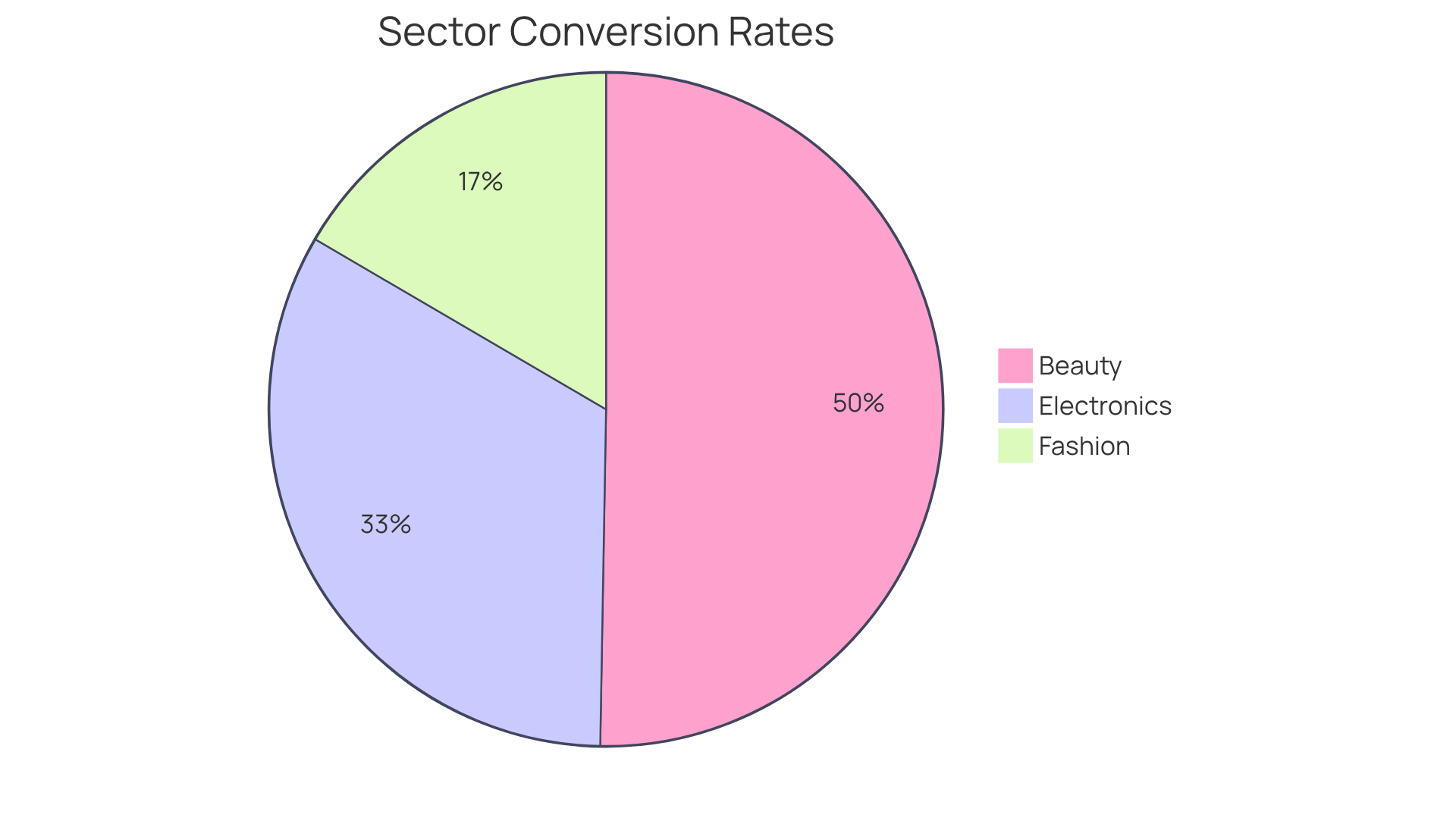
Device Impact: How Mobile vs. Desktop Affects Conversion Rates
Mobile devices now account for a substantial share of eCommerce traffic; however, they typically exhibit a lower ecommerce average conversion rate compared to desktop platforms. To effectively engage this audience, brands must prioritize mobile site optimization, emphasizing speed and usability.
Essential strategies include:
- Adopting responsive design to ensure seamless navigation across devices
- Streamlining the checkout process to three steps or fewer, significantly reducing cart abandonment rates
Research indicates that even a modest 0.1-second improvement in mobile page load time can elevate sales rates by an average of 8.4%. Furthermore, leveraging features such as augmented reality can enhance the shopping experience, as 61% of consumers favor retailers that provide such innovations.
By addressing these factors and implementing a comprehensive Conversion Rate Optimization strategy, companies can improve their ecommerce average conversion rate and transform their mobile sites into powerful conversion tools. Parah Group's five-step process underscores the importance of understanding consumer psychology, rigorous testing, and aligning paid ads with landing pages, ultimately driving increased sales and customer satisfaction for DTC companies.
To maximize the effectiveness of these strategies, brands should continuously monitor performance metrics and refine their approaches based on .
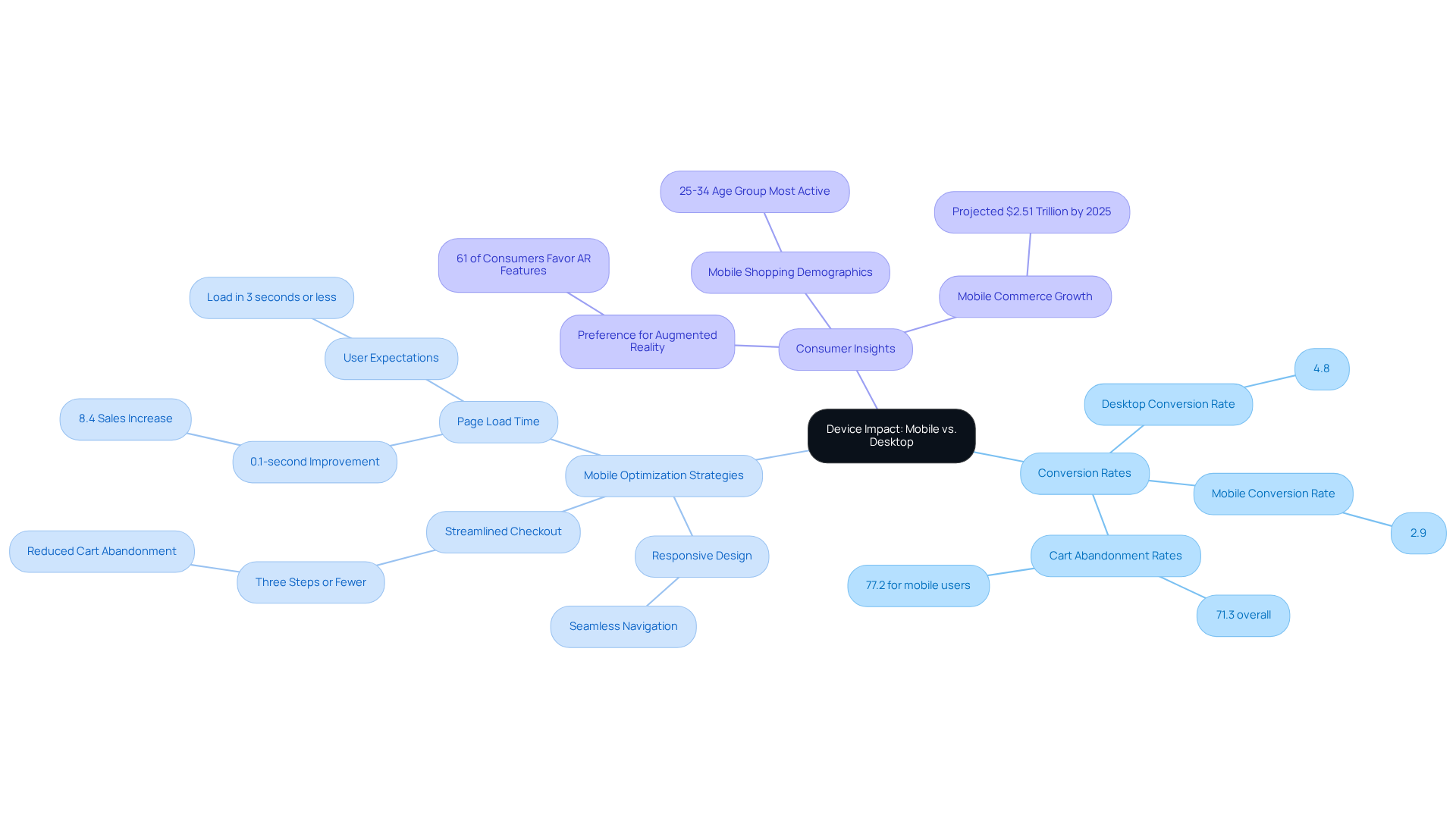
Traffic Sources: Analyzing Their Influence on Conversion Rates
Traffic sources significantly impact success metrics, with organic search traffic typically yielding superior results compared to paid advertisements. Users arriving via are often more qualified, as they actively seek specific products or services. For instance, organic search success percentages generally range from 2% to 4%, whereas paid search success percentages hover around 2% to 3%. This distinction underscores the effectiveness of SEO in attracting engaged visitors who are more likely to complete a purchase.
Brands must prioritize optimizing their SEO strategies to enhance visibility and drive qualified traffic. Successful case studies validate this approach; for example, companies that invest in robust SEO practices frequently report substantial increases in organic traffic and success metrics. Moreover, aligning SEO strategies with a comprehensive evaluation of paid campaign results ensures that brands can maximize their overall success potential.
Collaborating with an expert CRO agency like Parah Group can further elevate the ecommerce average conversion rate. Parah Group distinguishes itself by focusing on profitability and sustainable growth, employing data-informed strategies that reduce customer acquisition costs while enhancing margins. With a team of senior-level specialists who understand key metrics, Parah Group tailors its strategy to meet the unique needs of DTC businesses. By leveraging both organic and paid methods, DTC companies can cultivate a holistic marketing approach that fosters sustainable growth, positioning themselves to optimize their overall success potential.
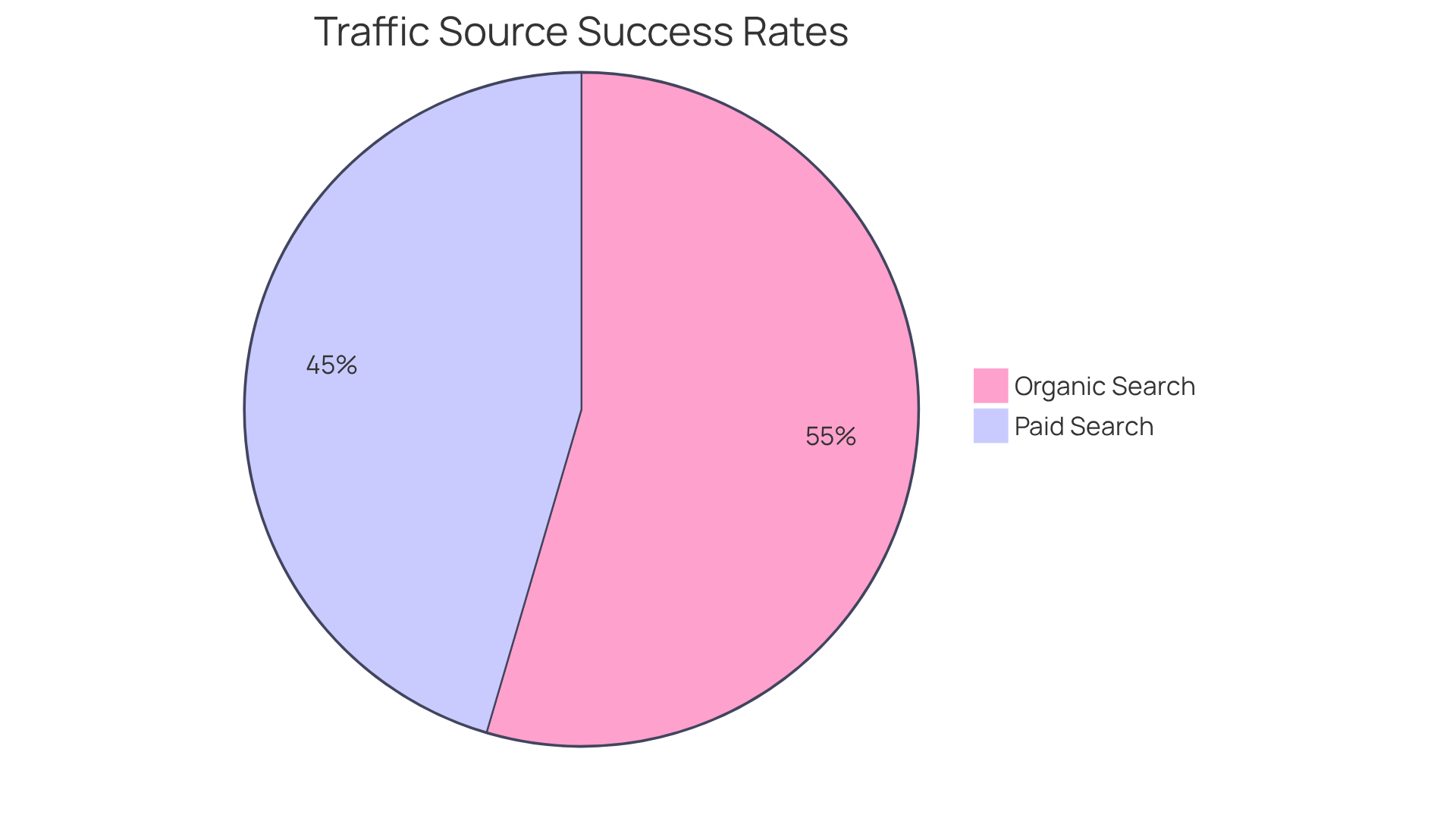
High-Ticket vs. Low-Ticket Sales: Conversion Rate Differences
High-priced items typically face challenges in sales compared to their lower-priced counterparts, primarily due to increased consumer reluctance associated with larger expenditures. To address this, companies must prioritize building trust through essential strategies. Customer reviews act as powerful endorsements, providing social proof that can significantly sway potential buyers. Detailed product descriptions, complemented by high-quality visuals and videos, help alleviate concerns regarding product quality and fit, particularly in sectors like fashion and luxury. In these markets, the ecommerce average conversion rate hovers around 3.56%, but for luxury items, it can plummet to as low as 0.5%, with the ecommerce average conversion rate for success percentages generally ranging from 0.5% to 1.5% due to elevated price points and a more discerning customer base.
Robust return policies play a crucial role in mitigating perceived purchase risks, reassuring customers that they can return products if they do not meet their expectations. Offering satisfaction guarantees and transparent return processes further strengthens this trust. Case studies illustrate the effectiveness of these strategies: for example, premium fashion brands that adopted high-quality zoom features and detailed size guides experienced heightened customer confidence and increased sales. Similarly, high-end labels that provided virtual consultations and authentication certificates noted improved customer trust and enhanced sales, as highlighted in the case study on luxury item customer experience enhancement.
Understanding consumer behavior is essential; statistics reveal that a substantial portion of high-ticket purchases involves . By addressing these needs through comprehensive FAQs and expert reviews, brands can further bolster confidence in their offerings. Additionally, implementing robust security measures, such as SSL certificates and security badges, is vital for establishing customer trust. Ultimately, fostering trust transcends merely mitigating risk; it involves creating a seamless and reassuring shopping experience that enhances the ecommerce average conversion rate by encouraging consumers to commit to their purchases. As noted, "With the right approach, your luxury or high-end products can move beyond being merely viewed to being actively purchased," ensuring sustained growth and success in the competitive realm of e-commerce.

Consumer Psychology: The Key to Understanding Conversion Rates
Understanding is essential for increasing success rates. Factors such as social proof, scarcity, and urgency play a pivotal role in influencing purchasing decisions. Brands must integrate these psychological triggers into their marketing strategies to enhance engagement and drive results. By leveraging these insights, companies can create a compelling narrative that resonates with their audience, ultimately prompting action and fostering brand loyalty.
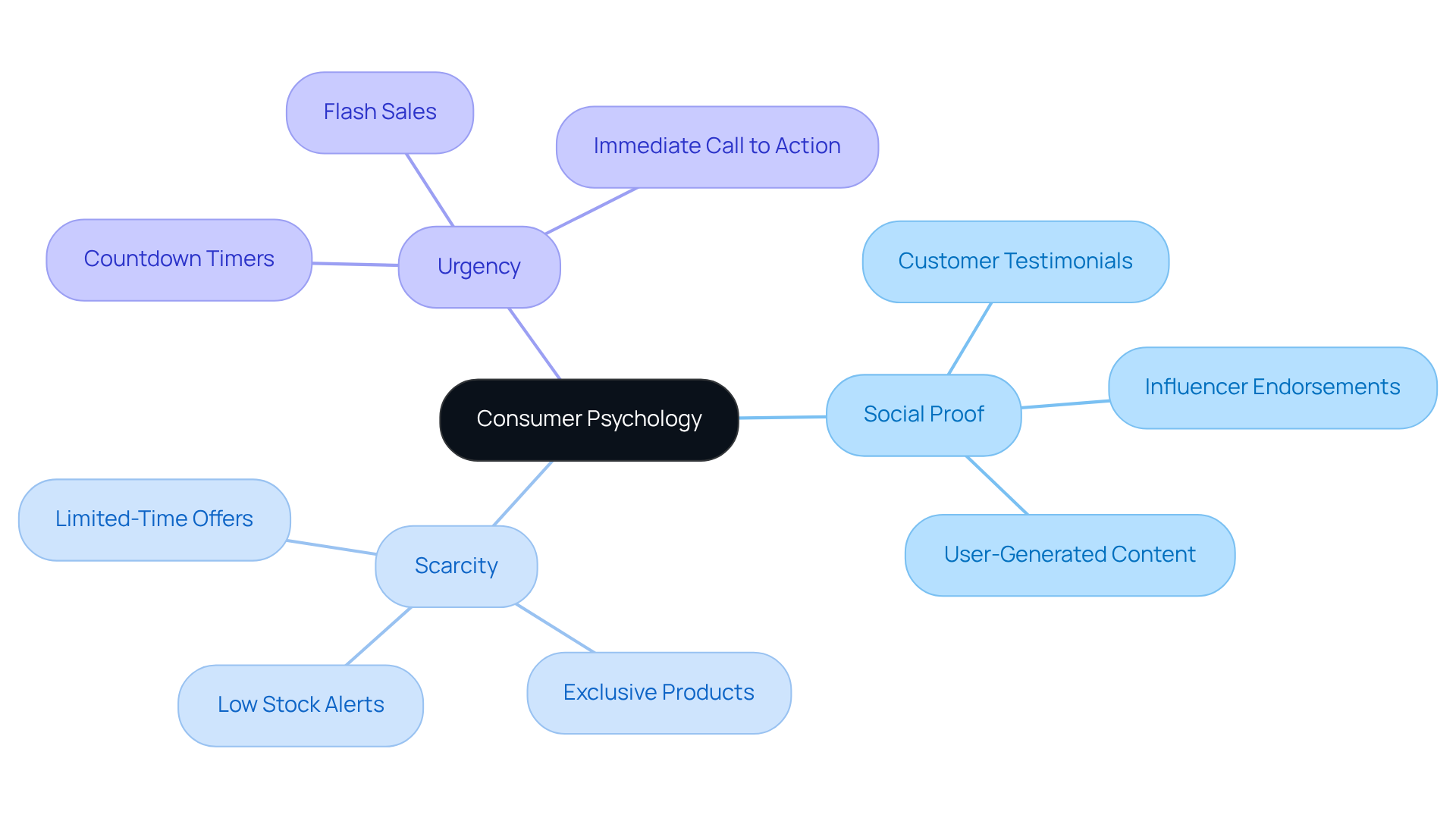
Checkout Optimization: Streamlining the Path to Purchase
A complicated checkout process stands as a primary contributor to cart abandonment. To address this critical issue, brands must simplify the purchasing journey by:
- Reducing the number of steps needed to complete a transaction
- Offering guest checkout options
- Providing clear progress indicators
Implementing these strategies not only boosts the ecommerce average conversion rate but also significantly enhances customer satisfaction. At Parah Group, we draw on a decade of expertise in Conversion Rate Optimization (CRO), utilizing our comprehensive five-step process aimed at improving the ecommerce average conversion rate with profit-enhancing strategies. By understanding and conducting high-speed, thorough testing, we empower Direct-to-Consumer (DTC) companies to maximize profitability through an efficient checkout experience.
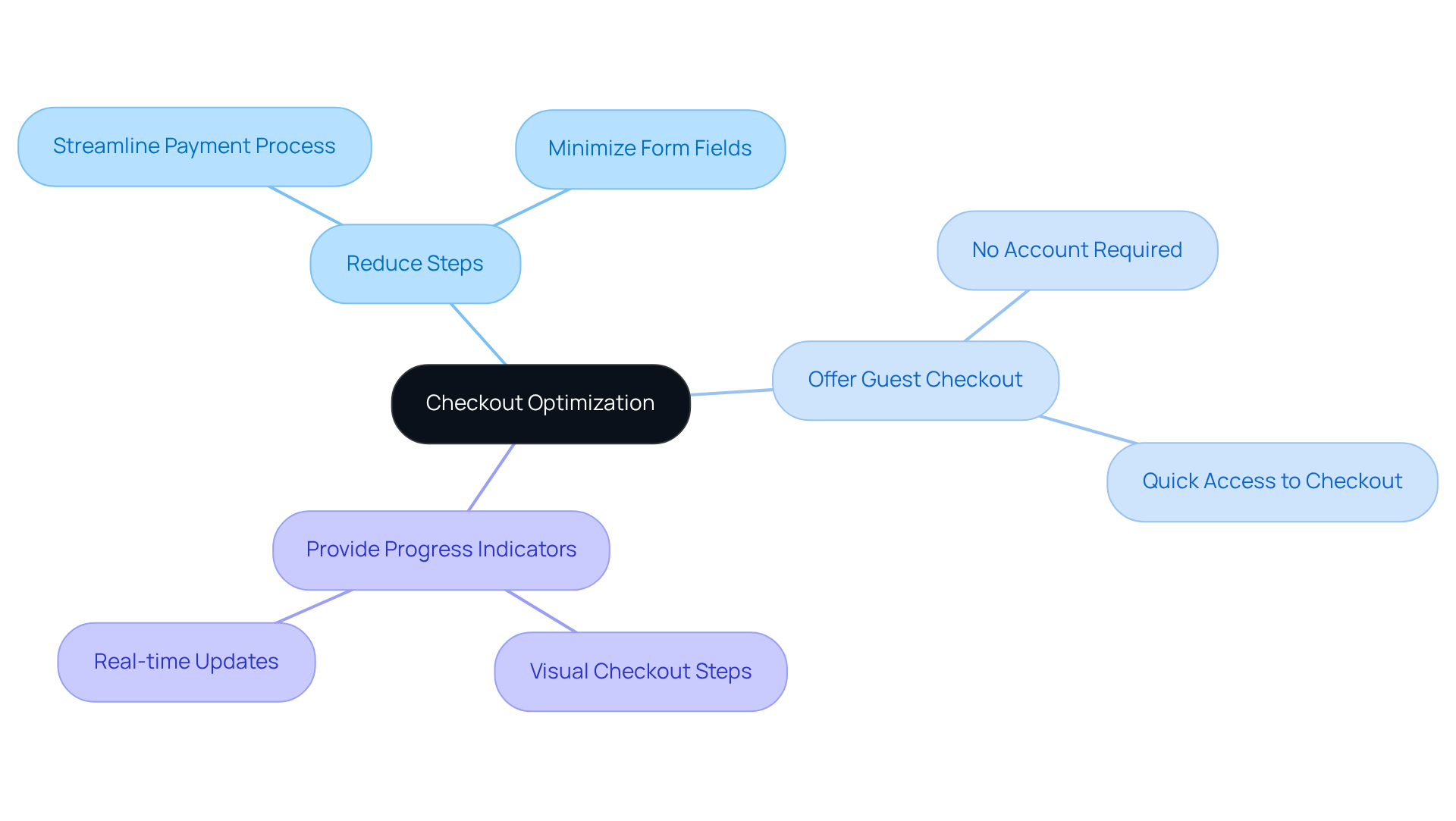
A/B Testing: Experimenting for Higher Conversion Rates
A/B testing stands as a powerful strategy for enhancing success metrics. By rigorously testing various iterations of landing pages, product descriptions, and calls to action, companies can pinpoint which elements resonate most effectively with their audience.
For instance, Parah Group adeptly implemented for a $30M clothing label, resulting in a remarkable 35% increase in success metrics and a 10% boost in income per visitor.
Continuous testing and refinement are vital for maintaining and improving the ecommerce average conversion rate over time, as shown by the significant outcomes achieved by various DTC brands. Notably, a cannabis brand experienced a 90% surge in average order value through tailored landing pages and upsell techniques.
These proven strategies not only drive revenue growth but also enhance overall profitability, establishing A/B testing as an indispensable component of any successful CRO program.
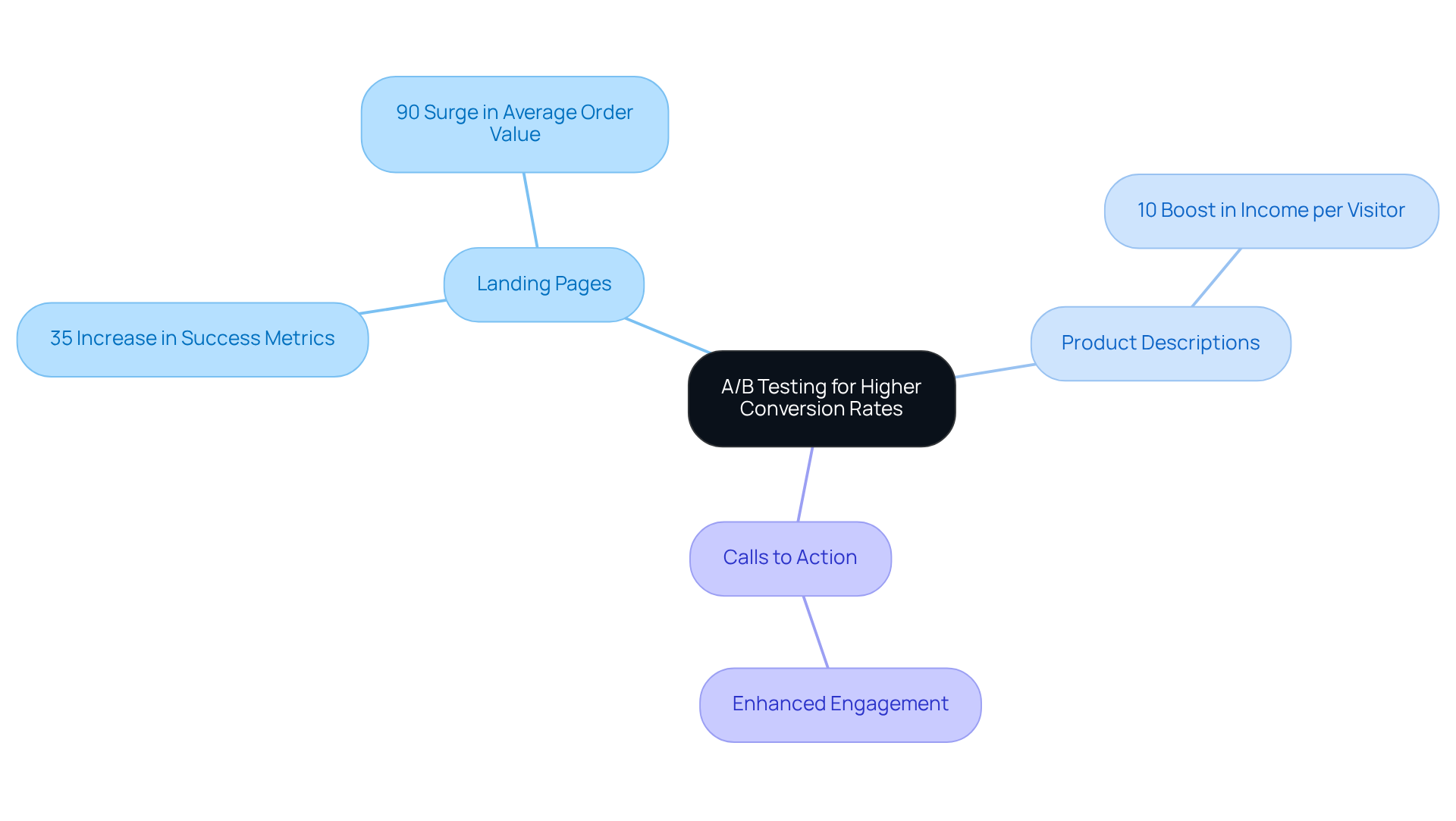
Continuous Improvement: Adapting Conversion Strategies for Success
The eCommerce landscape demands continuous improvement for sustained success. It is imperative for brands to regularly review their conversion strategies and analyze performance data to enhance their ecommerce average conversion rate while remaining informed about industry trends. Such a not only adapts strategies but also fosters ongoing growth and profitability. By embracing this mindset, brands position themselves to thrive in an ever-evolving market.

Conclusion
The insights shared on eCommerce average conversion rates for direct-to-consumer (DTC) brands highlight the critical importance of understanding and optimizing various aspects of the online shopping experience. By employing expert strategies such as:
- user session recordings
- competitor analysis
- persuasive copywriting
brands can significantly enhance their conversion rates, ultimately driving sales and improving profitability.
Key factors influencing conversion rates have been explored, including:
- the impact of mobile versus desktop browsing
- the effectiveness of different traffic sources
- the nuances of high-ticket versus low-ticket sales
Furthermore, the significance of consumer psychology and streamlined checkout processes emerges as essential elements in fostering a seamless shopping experience. The use of A/B testing as a method for continuous improvement underscores the necessity for brands to adapt and refine their strategies based on data-driven insights.
In the rapidly evolving eCommerce landscape, DTC brands must remain proactive in their approach to conversion rate optimization. By understanding the diverse factors at play and implementing tailored strategies, companies can not only boost their average conversion rates but also ensure sustainable growth in a competitive marketplace. Embracing these insights and committing to ongoing improvement will empower brands to thrive and achieve their eCommerce goals well into the future.
Frequently Asked Questions
What strategies does Parah Group use to boost eCommerce conversion rates?
Parah Group employs user session recordings to identify pain points, conducts competitor analysis for performance assessment, and uses persuasive copywriting that resonates with target audiences.
How does user session recording help in improving conversion rates?
User session recordings allow companies to uncover customer pain points and refine the user experience by analyzing visitor interactions to identify barriers that hinder transactions.
Why is competitor analysis important for eCommerce success?
Competitor analysis helps set performance benchmarks, ensuring that clients maintain a competitive edge in a saturated marketplace.
What role does copywriting play in enhancing eCommerce conversion rates?
Compelling copywriting engages target audiences with action-oriented language that drives engagement and motivates purchases.
What is the average eCommerce conversion rate?
The average eCommerce conversion rate is approximately 2-3%, but it can fluctuate significantly based on industry specifics, target audience characteristics, and employed marketing strategies.
How do conversion rates vary across different sectors?
Conversion rates vary significantly across sectors; for example, fashion eCommerce platforms typically report around 1.5%, while electronics can achieve closer to 3%.
Can you provide examples of companies that improved their conversion rates?
A $30 million clothing company increased its success percentage by 35% by redesigning its homepage, optimizing product pricing, and introducing a gamified progress bar. Similarly, Grab Green, a cleaning product company, experienced an 80% rise in average order value by experimenting with free shipping thresholds and offering bundles.
What is the significance of monitoring metrics like average order value and customer acquisition costs?
Monitoring these metrics is vital for comprehensive performance analysis, as a high conversion rate may be less meaningful if the average order value is low and customer acquisition costs are high.
How can direct-to-consumer (DTC) brands enhance their performance?
DTC brands can enhance their performance by routinely reviewing metrics like conversion rates, average order value, and customer acquisition costs, and adjusting their strategies accordingly.
FAQs











